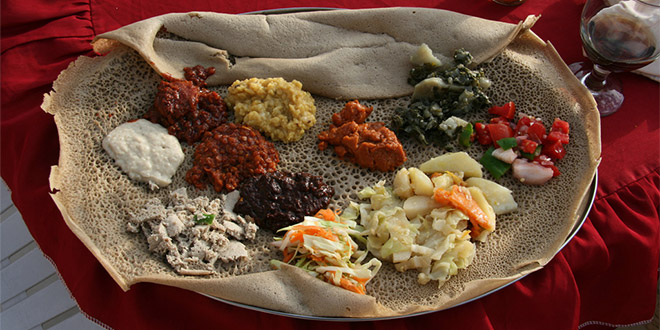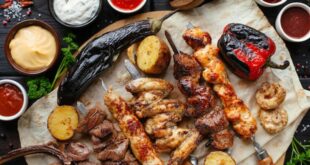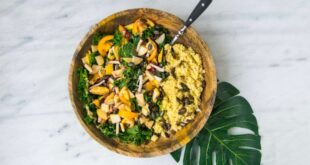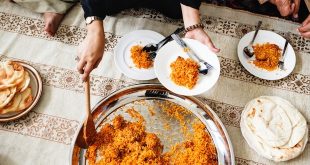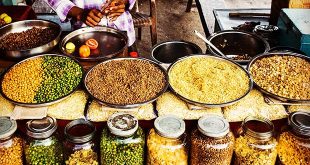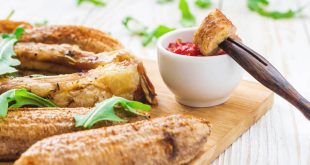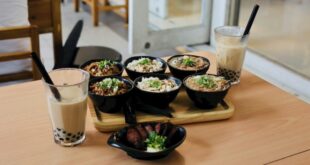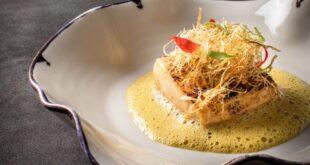Last Updated on March 15, 2023
The colorful city of Harar lies in the East of Ethiopia. It is a place where hyenas roam the streets at night, white magic is practiced, and chat is king. Centuries of being an important trade town have also made it the most culinary diverse city to visit in the whole of the country. And not only that, but it is also one of the most delicious African cuisines. So if you visit, you will surey find some fantastic dishes in Harar.
Ethiopia’s Cuisine
Ver esta publicación en Instagram
Ethiopia is one of the oldest countries in the world. Because of this, it has a rich and interesting food culture. Wats (stews) are made from a mixture of vegetables, lentils, chickpea flour and berbere, a spice blend. These are dolloped on top of injera – a large fermented bread resembling a pancake. Everyone eats communally, using their right hand to tear off the injera and scoop up the delicious wats on top. This kind of food is eaten all over Ethiopia for breakfast lunch and supper. You’d be hard pressed to find an Ethiopian who doesn’t love injera.
A Cultural Melting Pot
The food in Harar, while still having the ubiquitous injera and wats, includes a fascinating range of other dishes. This is because of its proximity to Somalia and Yemen and its history of being a major trading center with the Indians, Africans, and Arabs.
TAKEAWAY: The town was so important that until 1855 Turkey and Egypt both had kings stationed there. What’s more, Harar is considered the fourth holy city of Islam, sometimes receiving the name of “The City of Saints.”
The rich variety of cultures has now turned Harar into a food lovers’ paradise. The Old Town is bustling with markets, street food and weird and wonderful dishes that you won’t find in other parts of Ethiopia. Read on to see what my top 5 must-try dishes in Harar are, and more importantly, when and where to eat them.
My Top Must-Try Dishes in Harar, Ethiopia
Hanid
Hanid is made out of goat meat that has been cooked very slowly for 24 hours in an oven made from the soil around termite mounds. Termite soil is chosen because it can withstand high temperatures. The unctuous meat is then dipped into tamarind sauce and a little berbere.
Testie Restaurant is the only place to try hanid in Harar. This venue cooks two goats a day, ready by 10 am and usually all gone by 11:30 am. So make sure you go early to avoid disappointment.
Ful
Ful is a Yemeni dish made using fava beans. It has crossed the border and become a popular breakfast dish all over Ethiopia. But the ful in the Old Town of Harar is different to that from the rest of the country. The fava beans are blended into a smooth paste and the tomatoes, peppers, onions, and chili are served separately.
Abadir’s restaurant (just off the Feres Megala square in the old town) serves excellent ful. This is thanks to the fresh buns from the bakery next door and the homemade yogurt they serve at the end.
Camel hump
Definitely the weirdest on this list, but a must try for the food curious. Camel hump is originally a Somali dish and found closer to the Ethiopia-Somalia border. Babille is a town located one hour’s drive out of Harar, where every Monday and Thursday there is a large camel market. Tribes from all over Djibouti, Somaliland and Eastern Ethiopia go there to trade camel and other livestock. You don’t have to look far on market days to find a restaurant filled with people chowing down on wosla. Wosla is a dish consisting of camel meat and camel hump fat. It is served along with berbere and other spice mixes, rice and, finally, a clear broth made from camel meat, which is excellent with a squeeze of lime.
Fatira
Fatira is an egg pancake cooked in a large pan with tomatoes, onions and a little chili. After the batter and eggs have been cooked, the fatira is chopped into bite-size pieces. Watching the men cook this meal is mesmerizing.
Most places along the main street in the Old Town will serve fatira in the evenings, but the best place to eat it is at Testie Restaurant just off Feres Megala Square. Go upstairs and enjoy people-watching.
Baklava
Ver esta publicación en Instagram
It’s the Arab influence that makes Harar such a hot spot for sweets. Halava or mushabak are sold in most corner shops. Women dotted around the Christian market, and the main gate also sell a range of doughnuts, biscuits and other syrupy sweets. But the best sweet treat is Harar’s version of baklava, which is much looser and wetter than the typical Arab version and needs to be eaten with a fork.
A small shop in the New Town, behind Kim Café and near to Canal Café makes the best baklava.
Fortune favors the brave!
Ethiopian food is delicious, but food in Harar is at the next level because of its history as an important trading center. Food from all over the world is represented in the street food markets. Try out the places and dishes in Harar I have recommended, but I urge you to follow your nose and gut to see what culinary delights you discover too. You won’t be disappointed.
 Travel for Food Hub The Food Blog for Travel Lovers
Travel for Food Hub The Food Blog for Travel Lovers

